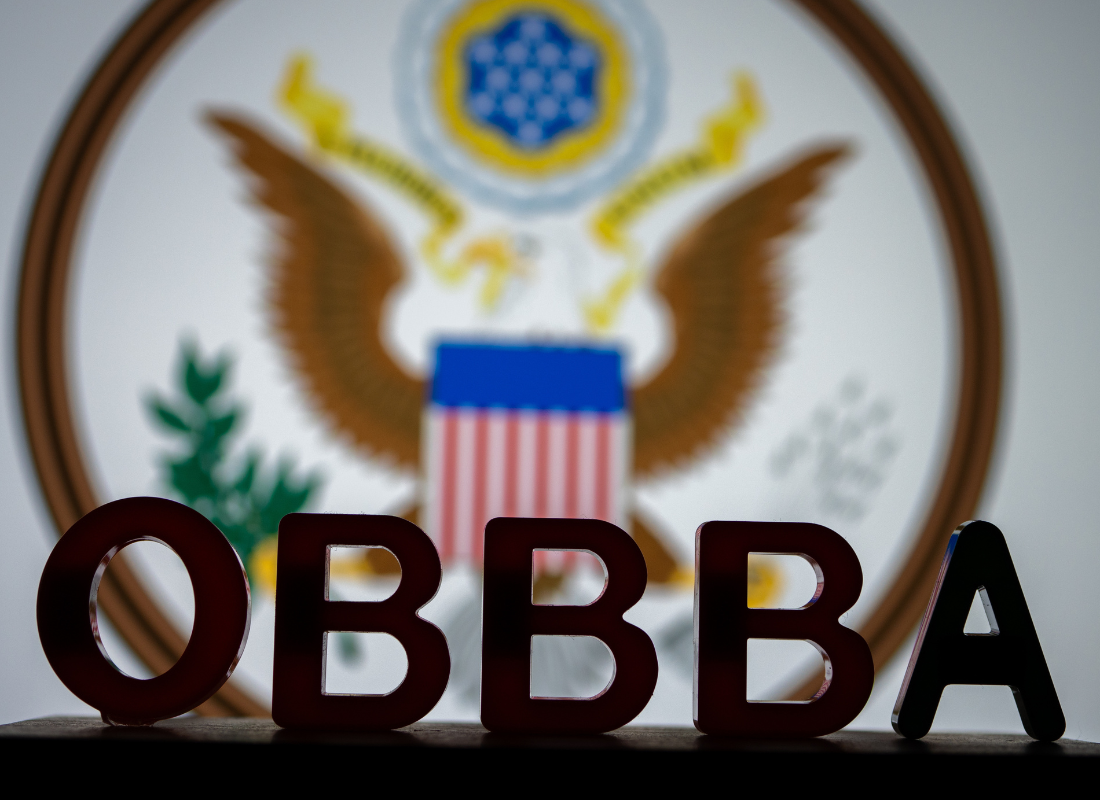Understanding GASB Conditions for Grants and Contributions
Originally published on November 23, 2022
Updated on November 14th, 2024
We previously discussed the accounting for contributions for organizations following accounting standards promoted by the Financial Accounting Standards Board (FASB). Now it’s time to dive into the accounting followed by organizations under the Governmental Accounting Standards Board (GASB). James Moore CPAs Jane Lastinger and Meghan Rizzi (members of James Moore’s Public Broadcasting Team) take you through the details.
GASB Statement 33 establishes accounting and financial reporting standards for non-exchange transactions, or contributions. There are four categories of GASB 33 non-exchange transactions:
- Derived tax revenues, such as income tax, sales tax and other tax assessments
- Imposed non-exchange revenues, such as property taxes and fines
- Government-mandated non-exchange transactions, such as federal programs that state or local governments are mandated to carry out
- Voluntary non-exchange transactions, which include certain grants and private donations
A Deep Dive Into Voluntary Non-Exchange Transactions
For voluntary non-exchange transactions, GASB 33 includes time requirements and purpose restrictions. Time requirements affect the timing of recognition. They specify the period of time during which resources must be used or when use may begin. Resources must be maintained intact until a specified date or event has occurred. Purpose restrictions relate to the purposes for which the resources should be used.
When should you recognize revenue? Organizations should recognize assets and liabilities when eligibility requirements are met or resources are received (whichever comes first). For revenues and expenditures, recognition occurs when all eligibility requirements are met. Note that resources received prior to the occurrence of the transaction should be reported as unearned revenue.
In transactions such as contributions to permanent or term endowments, the provider stipulates resources that should be maintained intact for an amount of time or until a specific event has occurred. For these transactions, resources should be recognized as revenues when received and expenditures when paid.
Eligibility requirements for voluntary non-exchange transactions include one or more of the following:
- Required characteristics of recipients (and secondary recipients, if applicable): For example, under a certain federal program, recipients are required to be states, and secondary recipients are required to be school districts.
- Time requirements: The provider may specify a time period during which resources must be used or when use can begin.
- Reimbursements: The provider offers resources on a reimbursement, or expenditure-driven, basis once the recipient has incurred all allowable costs. No award is given until the recipient has met the requirements by incurring these reimbursable costs.
- Contingencies: The provider’s offer of resources may be contingent upon a specified action of the recipient and its occurrence. An example of this is when the recipient must raise a specific amount of resources from third parties or dedicate its own resources for a specified purpose.
Let’s break down these concepts by examining six examples of voluntary non-exchange transactions.
Example A: Reimbursements for Educational Programs
The state reimburses school districts for specific costs related to special education, up to a maximum amount for each school district in each school year. To obtain reimbursement for allowable costs, the school districts submit quarterly reports to the state.
This is a voluntary non-exchange transaction because the program is not a mandate on the state or the school districts. Now… are there eligibility requirements that need to be met in order for the revenue to be recognized?
Yes, there are three eligibility requirements necessary here. The recipient must be the school district, which is a required characteristic of the recipient. The school year must have begun, which is a time requirement. And the school district must incur allowable costs, which is an example of reimbursement-type or expenditure-driven grant.
Example B: Resources for a Community College’s Capital Outlays
The state offers money to a community college to be used solely for capital outlays. Amounts are based on the student population. Amounts not used within three years must be returned to the state.
This is a voluntary non-exchange transaction. The program is not a mandate on the state or the community college.
Let’s look at eligibility requirements. First, there’s no requirement that the college first incur allowable costs under the state’s program to qualify for resources. Therefore, this is not a reimbursement-type or expenditure-driven grant program. However, there is a time requirement necessary for the transaction to occur; the applicable period should have begun.
“If they don’t really state in the agreement what that applicable period is, the start of it would be the state’s fiscal year,” Jane said. “Once that time period has begun, you would have that revenue that can be recognized. Any unspent funds related to that would be considered restricted.”
There is also a purpose restriction, as resources are required to be used for capital outlays. However, purpose restrictions do not impact the timing of recognition of voluntary non-exchange transactions.
Example C: Private Donation to a Library
An individual promises in writing to give $1 million to the local library. The donation is for the construction of a new wing. The library must also raise an equal amount of donations from others. What eligibility requirements must be fulfilled for the transaction to occur?
The library has to raise an additional $1 million from other parties for construction of the new wing, which is a contingency. The library should recognize a receivable and a revenue for that individual’s $1 million when the additional $1 million has been raised.
There is also a purpose restriction; the money should be used for the construction of the new wing. Any unspent funds are going to be shown as restricted until those funds are actually used.
Example D: Matching Gift from a Corporation
A large corporation has a published policy of matching employees’ gifts to qualified educational institutions at 50 cents on the dollar. The recipient is not restricted in its use of the matching gift. An employee of the corporation makes a $15,000 cash gift to a university and forwards the appropriate matching gift forms to the university.
Note that there are two components here: the $15,000 from the employee and the $7,500 match from the corporation. There are no eligibility requirements for the employee’s gift. However, the corporation’s gift requires that the employee has to make the gift of $15,000 to the educational institution.
Filing matching gift forms is administrative and not considered an eligibility requirement.
The university should recognize the $15,000 cash and then also record a pledge receivable from the corporation of $7,500. Revenue should be the total of $22,500. The university records that revenue when it receives the employee’s gift of $15,000.
Example E: Term Endowment From an Alumnus
An alumnus promises to donate $500,000 to their alma mater with the stipulation that the university invest the principal and use the income to provide summer research grants for accounting faculty members. The agreement specifies that once the donor dies, the university should withdraw the principal of the gift and use the money for the summer research grants for accounting faculty members.
What eligibility requirements are in play in this transaction? The requirements to invest the principal until the donor’s death and then to expend it for the summer grants are purpose restrictions. The requirement to maintain the principal intact until after the donor’s death is considered a time requirement. In this example, the university will recognize assets and revenues when the gift is initially received. The university should not recognize a receivable when the promise is made.
“That’s because they cannot begin to comply with that time requirement until the actual gift is received,” Jane said. “That’s going to be the ultimate recognition for the $500,000 in this example.”
When the gift is recognized, the university will report that resulting net position as restricted because of the purpose restrictions and time requirement. While those expire once the donor dies, the university should continue to report that net position as restricted because the funds must be used to provide summer research grants for accounting faculty members. This means the funds would still be categorized as restricted net position until they are expended.
Example F: Individual Pledge to a Hospital
An individual pledges $500,000 to the county hospital to further its mission of serving the indigent. The donor’s letter specifies that he will pay $100,000 per year over the next five years and that each installment should be used in the year it is paid.
For the transaction to occur, a time requirement must be fulfilled, since each installment should be used in the year it is paid. Assuming the hospital believes that the installments are probable of collection, it should recognize a receivable and a revenue of $100,000 in each of the five years.
The requirement to use the resources to further the hospital’s mission is not a purpose restriction because serving the indigent is part of the hospital’s general operations.
Revenue recognition is a complicated topic. Yet a thorough understanding is critical to making sure you stay in compliance with regulations. When in doubt, contact your higher education or nonprofit CPA with questions or concerns.
All content provided in this article is for informational purposes only. Matters discussed in this article are subject to change. For up-to-date information on this subject please contact a James Moore professional. James Moore will not be held responsible for any claim, loss, damage or inconvenience caused as a result of any information within these pages or any information accessed through this site.
Other Posts You Might Like

